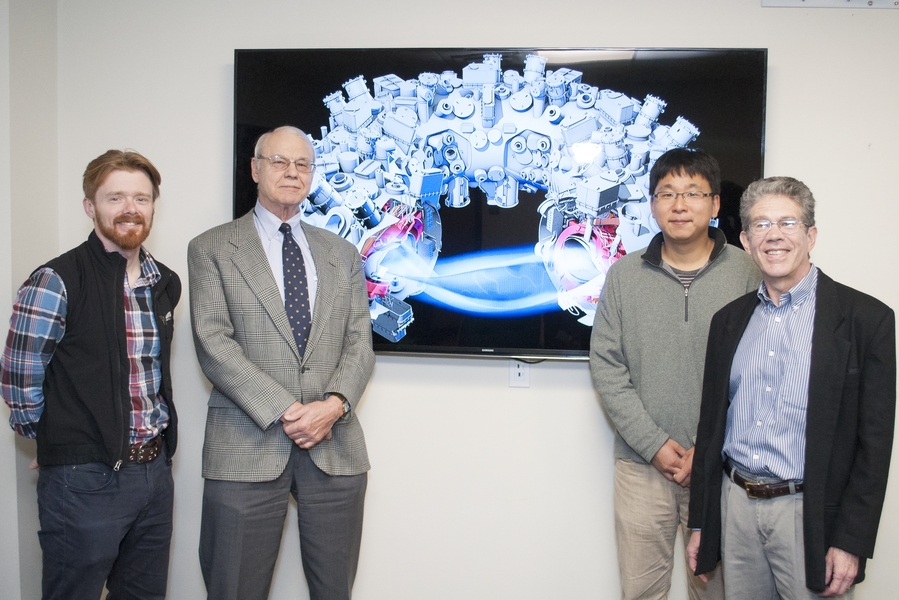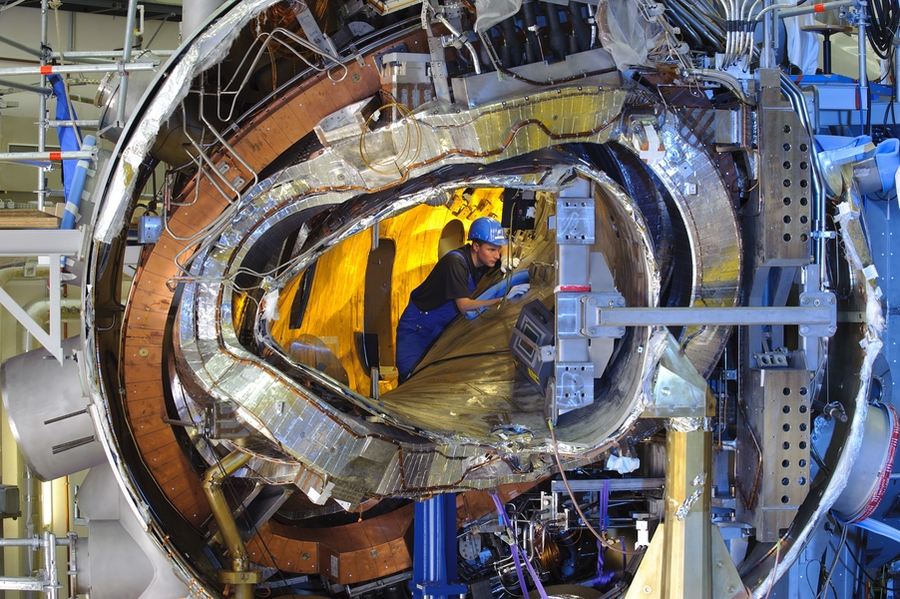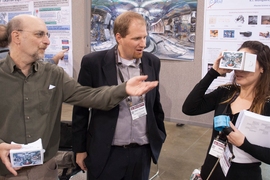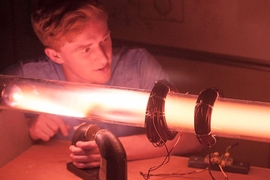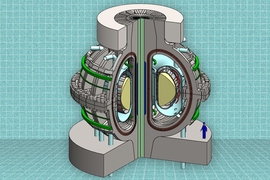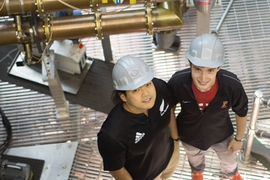Members of MIT’s Plasma Science and Fusion Center (PSFC) community are cheering the start of a long-anticipated physics experiment at the Max Planck Institute for Plasma Physics in Greifswald, Germany. Two teams of PSFC researchers are collaborating on the Wendelstein 7-X device, the world’s largest fusion experiment designed in the stellarator line of magnetic confinement fusion devices.
The PSFC has significant experience with a different configuration of magnetic confinement, having spent decades designing and running the Alcator series of high-magnetic-field tokamak experiments; the Alcator C-Mod device, located on campus, is the latest in that series. There are many similarities between the two designs, however.
Both the tokamak and the stellarator seek to harness the energy released from the fusion of hydrogen isotopes to provide clean and safe electrical power. Both use helical (spiraling) magnetic fields to contain the hot plasma fuel in a donut-shaped chamber. In a tokamak, this field is generated both by external electromagnets and a large electrical current that is driven in the plasma itself. Driving and sustaining this plasma current, and its impact on stability and transport of energy and particles, is a major focus of the research at MIT.
The stellarator concept takes a different approach. First invented by the noted astrophysicist and fusion pioneer Lyman Spitzer of Princeton University in 1950, the stellarator provides the entire helical field through external electromagnets formed in highly complex and twisted shapes.
Although the assembly of a modern stellarator like W7-X presents many engineering challenges, this approach has significant operational advantages. Because there is no need to drive a current in the plasma, the configuration is more readily extrapolated to steady-state, a necessity for economic operation of a fusion power plant.
The magnetic field geometry of Wendelstein 7-X has been optimized using super-computer simulations of particle orbits. Consistent with its steady-state mission, W7-X has super-conducting coils and is designed to create and sustain hot plasma for up to 30 minutes. The immediate goal of these experiments is to demonstrate that the loss of particles can be kept small so that high temperatures can be achieved.
In early phases of the experiment up to 10 megawatts of microwave power will be used to heat the plasma. Later, as much as 8 megawatts of neutral-beam power will be added, after water-cooled armor is installed to handle the exhaust heat. W7-X expects to produce plasmas with fusion-grade densities and temperatures 60-130 million kelvins.
Future experiments at W7-X will address the role that plasma turbulence plays in limiting overall performance, and PSFC researchers are working with the W7-X group to investigate this. One PSFC team — comprised of principal research scientist Jim Terry and postdoc Seung-Gyou Baek — will develop a fast camera system for viewing light emitted from the plasma, and will make important measurements of turbulence near the edge of the plasma. The other team — professor of physics Miklos Porkolab and staff scientist Eric Edlund — will develop a specialized interferometer for imaging density fluctuations deep in the hot plasma core. The issues surrounding turbulence are important in stellarators, as they are in tokamaks, since turbulence moves heat and particles across the confining magnetic field faster than would otherwise occur. Both teams expect to have first measurements during the 2017 experimental campaign.
These projects are supported by the U.S. Department of Energy Office of Fusion Energy Sciences and the Max Planck Institute for Plasma Physics.
